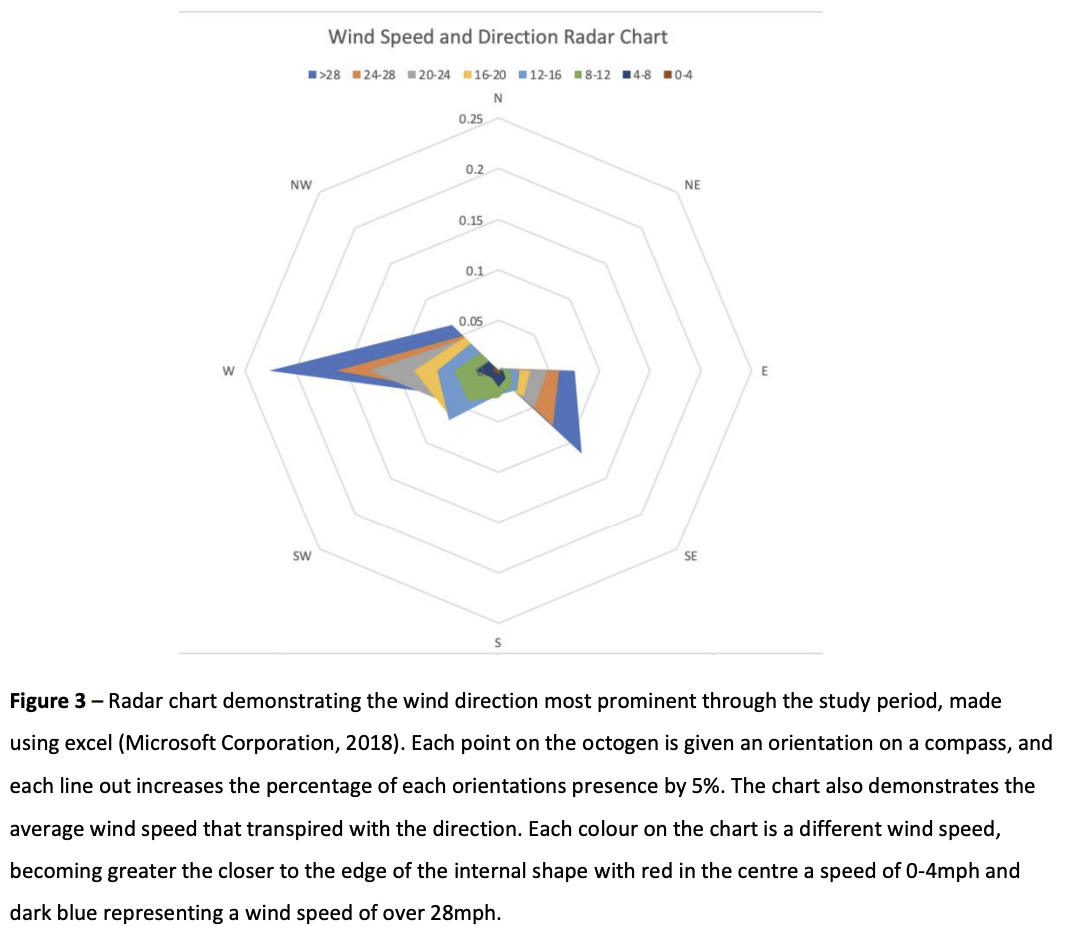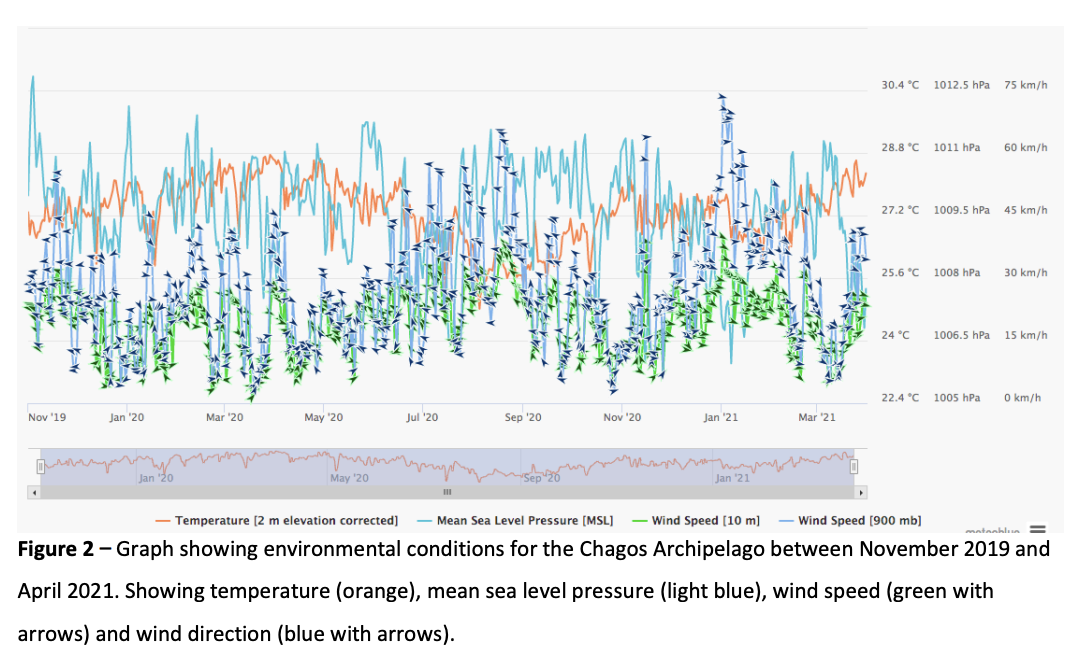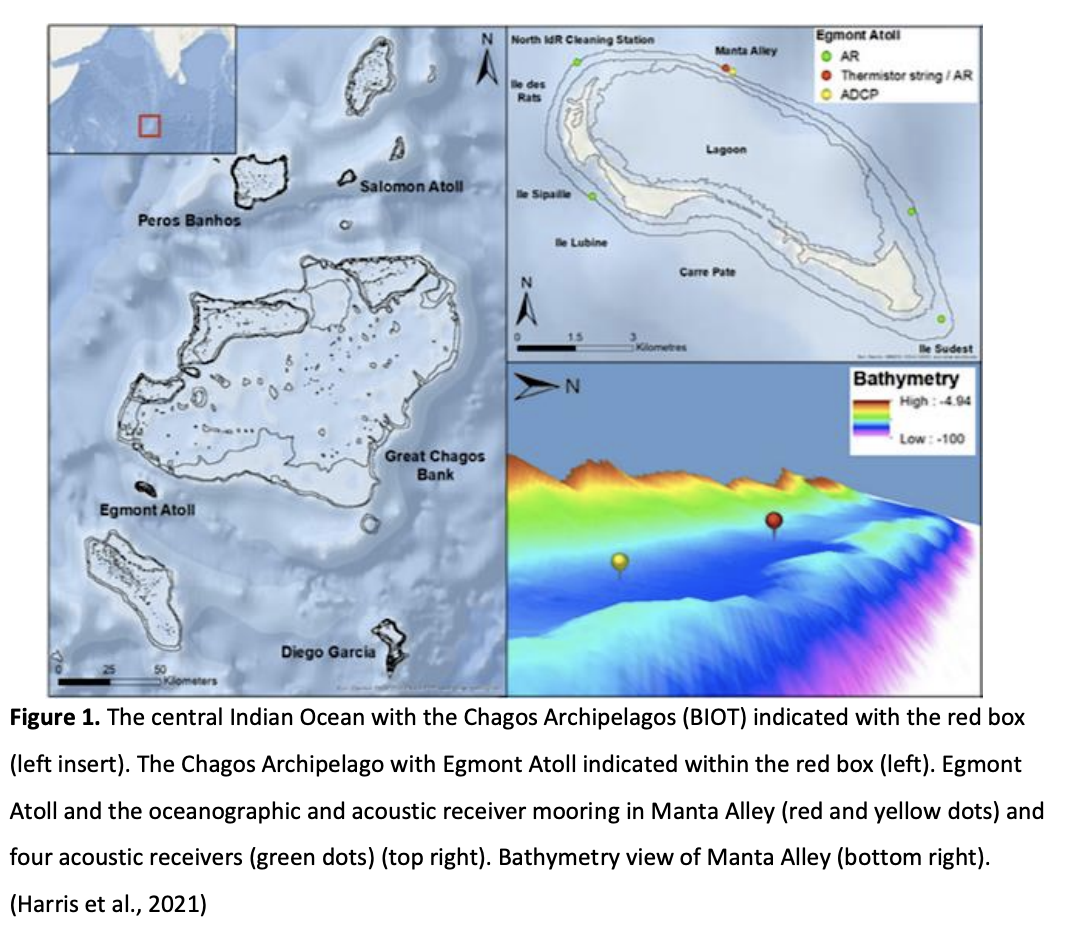Intra-annual variations of reef manta ray visitation patterns to a remote cleaning station and the implications for conservation
2022
Kathryn Thibaut (MRes Applied Marine Science - University of Plymouth)



Summary: In the Chagos archipelago, the reef manta ray population offers a unique opportunity to study environmental drivers of behaviour in the absence of anthropogenic stressors. This study used acoustic tags and weather data to determine factors influencing manta ray presence at a cleaning station. Hour of the day, month of the year, and tide were found to be the most significant drivers. Understanding these patterns can inform conservation management to effectively protect the species.
Abstract
“In the Chagos archipelago, British Indian Ocean Territory (BIOT), the subpopulation of reef manta ray (Mobula alfredi) inhabits an area which is mostly devoid of any anthropogenic stressors often seen in reef environments. Due to this, they can provide a baseline for looking at environmental drivers of behaviour while reducing any outside bias, and thus can inform the management of conservation for this and other similar species. However, this subpopulation of manta rays is currently one of the least studied in the world so there is a need for increased research. This study used acoustic tags and weather data to determine which environmental conditions drive the presence of Mobula alfredi at a cleaning station at Egmont Atoll, as well as to what extent these drivers are more or less significant. Every time an individual M. alfredi came within 200 metres of a receiver it sent a signal to the system, creating a detection, as well as noting the tag ID, sex and maturity status of the manta. Once the environmental data (received from Meteoblue) was put alongside the tag data and analysed it was shown that hour of the day, month of the year and tide were found to be the most significant factors in determining manta presence. These components were the most important as the mantas show diurnal as well as seasonal patterns which change dependent upon their feeding patterns or need for cleaning services provided at this site. It was shown that patterns for visitation to the cleaning stations was in direct correlation with the opposite of that found at feeding sites, as these behaviours run in conjunction with one another, demonstrating a trade-off. This research can be used to better develop current conservation management as it demonstrates that the presence of these mantas is not a constant, but is dynamic. Therefore, the protection put in place must also be the most effective available to defend the species successfully.”
Author Affiliations
University of Plymouth
The Manta Trust
